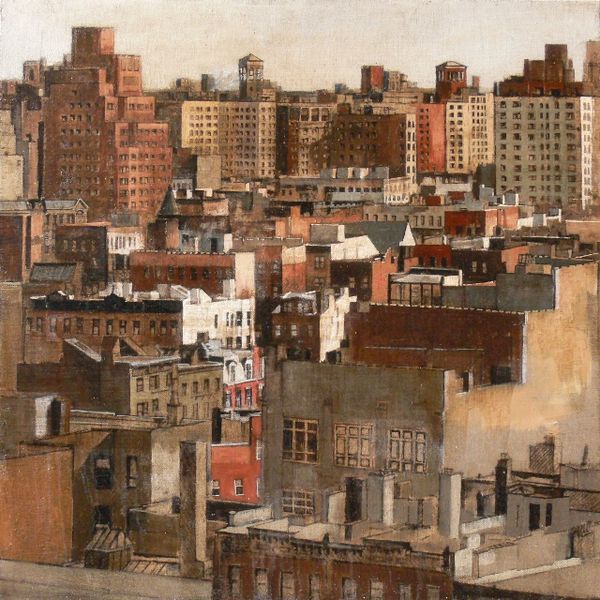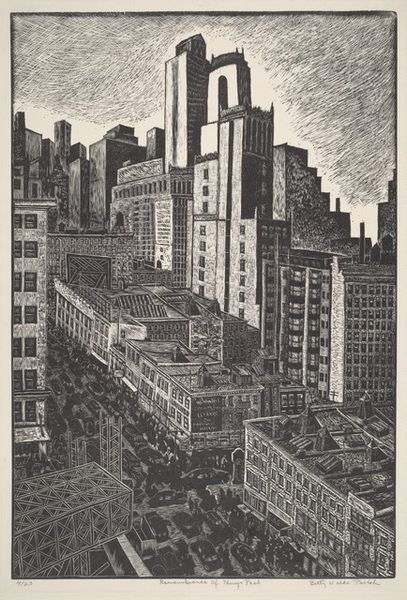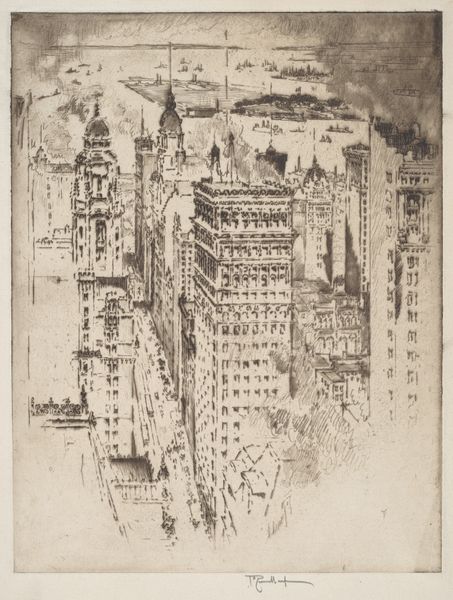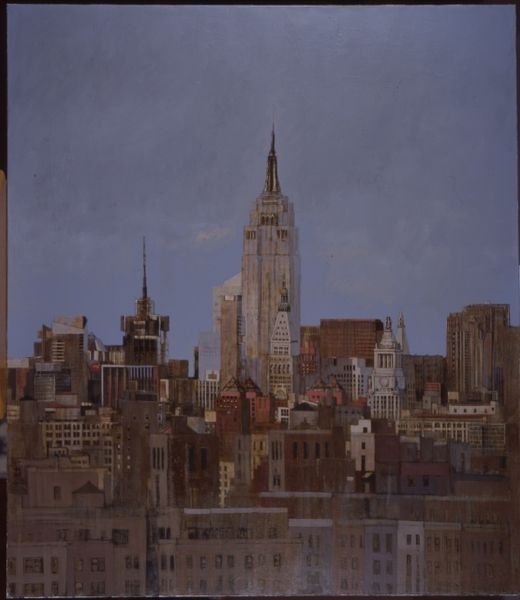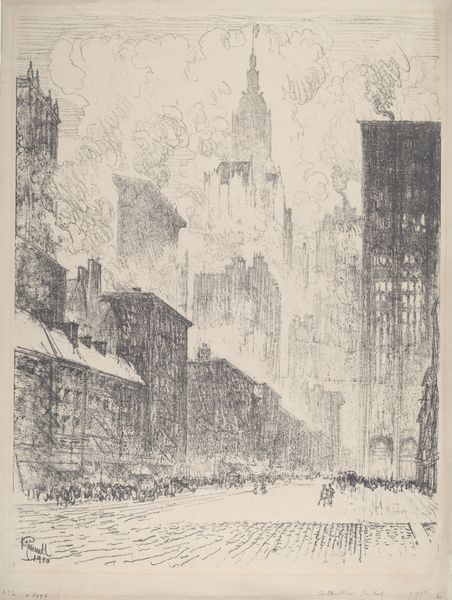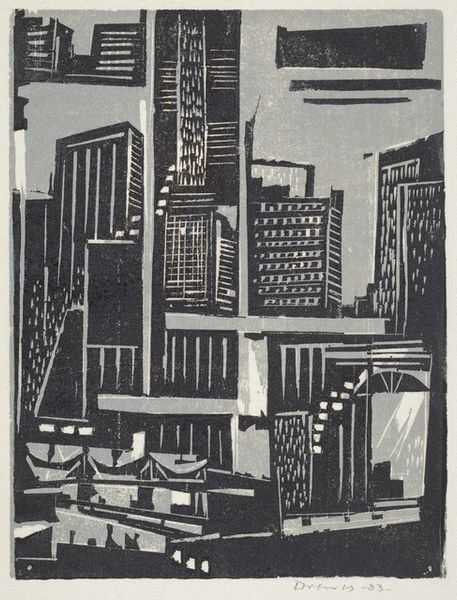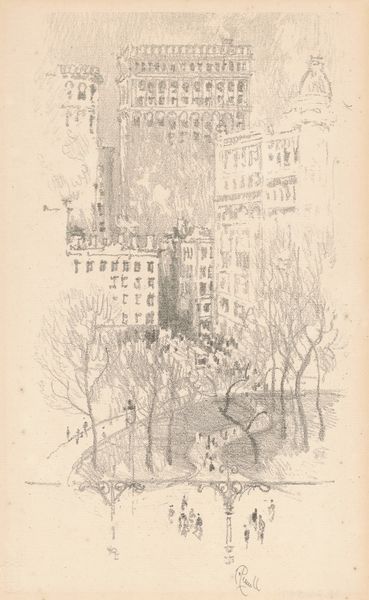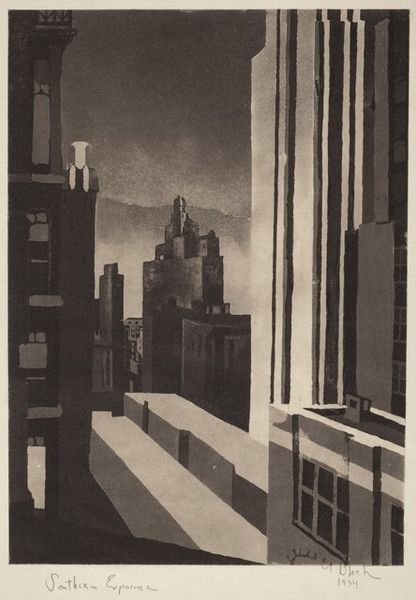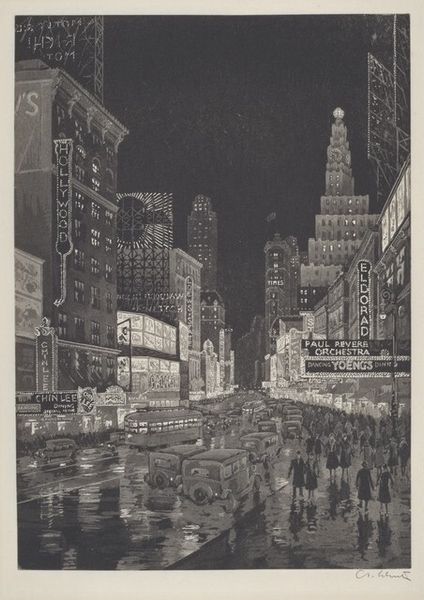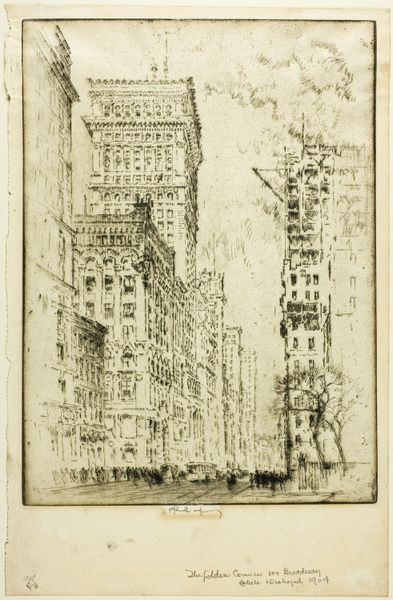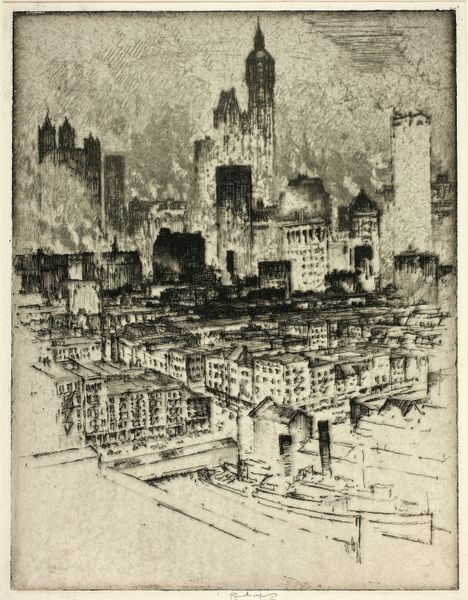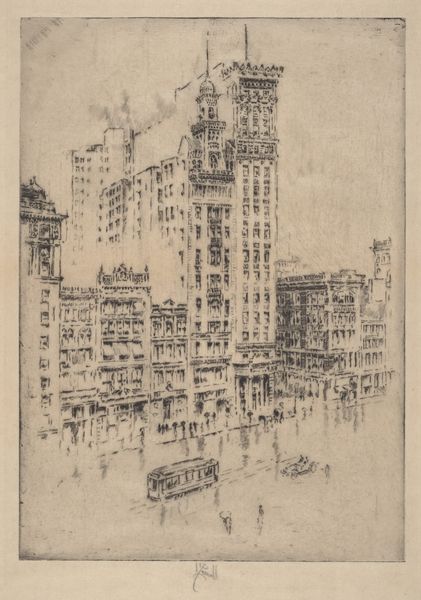
Dimensions: image: 13.9 × 8.8 cm (5 1/2 × 3 7/16 in.) sheet: 13.9 × 8.8 cm (5 1/2 × 3 7/16 in.)
Copyright: National Gallery of Art: CC0 1.0
Editor: Here we have Rachael Robinson Elmer’s “The Singer Building from Brooklyn Bridge,” a watercolor painting from 1914. I’m struck by the somewhat muted tones and the feeling of a cold, wintry day in a rapidly growing metropolis. What elements jump out at you? Curator: It’s interesting to see the city, particularly the Singer Building, represented this way at the time. Keep in mind that this period saw a huge surge in skyscraper construction and a general sense of American progress. What does it tell us that Elmer chose to portray it through this slightly veiled, impressionistic lens, rather than with stark realism? Editor: So, you're suggesting that it is less of a celebratory image and more of a muted reflection on urbanization? Curator: Precisely. Also, note that the artwork includes text mentioning the "Art Lover's New York," it almost indicates a certain tourism boom. Did artists cater to tourists or did they embrace a genuine enthusiasm for capturing and shaping this dynamic cityscape for diverse audiences? Editor: That's a great point. It adds another layer, highlighting the commercialization of art and the evolving perception of New York as a spectacle, a site to be consumed. Is this something commonly observed within the Impressionistic representations of cityscapes during that period? Curator: It is! It speaks to the power of art as both a mirror and a shaper of society, constantly negotiating between the forces of progress, commodification, and individual artistic vision. Editor: It's fascinating to think about how this piece reflects those societal shifts! I'll definitely be more attentive to these contextual aspects moving forward. Thanks! Curator: Indeed. This deeper examination adds another dimension to how we see and comprehend the artistic approach taken, enabling an understanding that's not just about the artwork itself but its interaction with society.
Comments
No comments
Be the first to comment and join the conversation on the ultimate creative platform.
